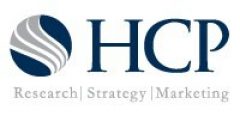Strategic Planning in Uncertain Times
The COVID-19 crisis has caused widespread hardship across the world. Many businesses and organizations have been forced to shut down from a combination of pandemic-related consumer changes and government lockdowns. Despite the widespread challenges brought by the novel coronavirus, some have fared better than others.
Having a clear vision and mission is important in normal times, but essential in these rapidly -changing circumstances. The companies that are thriving during the pandemic, are doing so due to a combination of good fortune – namely, having products and services in high demand during COVID-19 – and effective strategies. Companies with a strong position and ineffective strategy risk being unable to scale, unable to reach their audience, and unable to articulate their value-added proposition.
Governments and nonprofit organizations are similarly threatened by COVID-19. Facing expanding responsibilities and shrinking budgets, uniting and focusing on a shared organizational purpose is critical for assigning priorities and deploying new practices during the pandemic.
HCP Associates has provided consulting and strategic planning services to the public and private sectors over the firm’s 35 years in business. Through these years of experience, we have found three elements essential in completing a strategic planning process: know your scope, understand the larger economic forces at play, and obtain feedback from all levels of the organization.
Know your scope
Develop a clear understanding of your scope to create an actionable plan. Corporate departments may not have latitude to change the functions of other departments. In the government sectors, this is even more true. When HCP Associates engaged with Pinellas County Economic Development (PCED) to moderate a strategic planning workshop, the process required alignment with the countywide strategic plan – especially fostering continual economic growth and vitality. Through this process, PCED articulated its organization’s focus in the context of the county’s strategic plan. This allowed for prioritizing the organization’s functions in line with the county’s and the public’s expectations.
Understand the larger economic forces at play
A strategic plan is blind without an understanding of the environment in which the organization or firm operates. When HCP Associates was engaged by DIVERSE: Issues in Higher Education, a magazine advocating for diversity and inclusion within and outside Academia, to help refine its strategic positioning, competitive analysis was a foundational component of its positioning. By identifying the strengths of DIVERSE’s brand in contrast to its competitors, the company was able to focus its messaging on its pioneering status in the industry.
Market analysis extends beyond competitor analysis to understand the larger shifts happening economically, technologically, demographically, and culturally. With the decline of traditional media, DIVERSE’s continued shift to producing digital content has paid dividends with record viewership through webinars focusing on social injustice.
Obtain feedback from all levels of the organization
Oftentimes, executives at large organizations lack insight from all the levels into the challenges they face. In the abstraction of reporting and KPIs delivered to managers, important obstacles and opportunities may be overlooked. For that reason, it is essential to engage all levels of a company to leave no stone unturned. When HCP Associates worked with Gainesville Regional Utilities (GRU) to assemble a new strategic plan, we did not merely speak to senior leadership in a big room. Instead, we gathered feedback from a swathe of stakeholders – from the general public, local government and media, and all levels of GRU’s management. This process produced a holistic and realistic view of the challenges and opportunities facing GRU.
Report Cards & Success
Whether it’s a turbulent economy, management struggles, brand equity issues or even the possibility of new service and/or product offerings, strategic planning is essential for rationalized change. The strategic planning process rewards not only the participants but the company’s brand equity, products, services and the overall value-added proposition of identifying areas of improvement with quarterly evaluations of new KPIs. From traditional platforms like a SWOT analysis to radar screens, sales funnels and five P models, tracking change and peoples’ responsibilities through quarterly report cards allows an organization to see positive results in as little as one or two quarters.
Conducting a strategic planning session offsite with key stakeholders and an experienced moderator with follow up quarter report card-based meetings will allow your organization to define essential long-term strategic direction. The process can often result in an enhanced branding and positioning platform with new vision and mission-based changes that can not only affect the bottom line of products and services, but also enhance the entire experience for management, employees, vendors, and customer relations.

